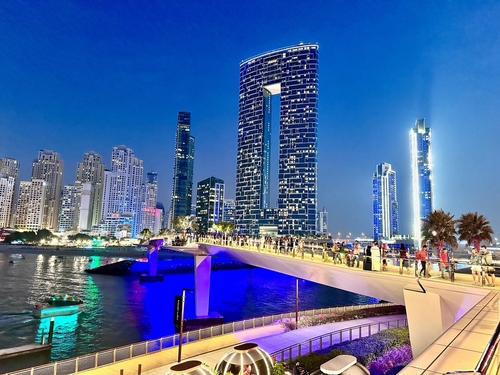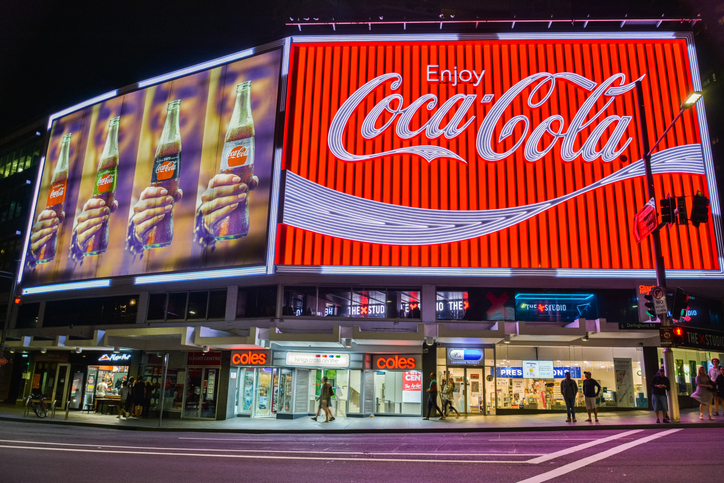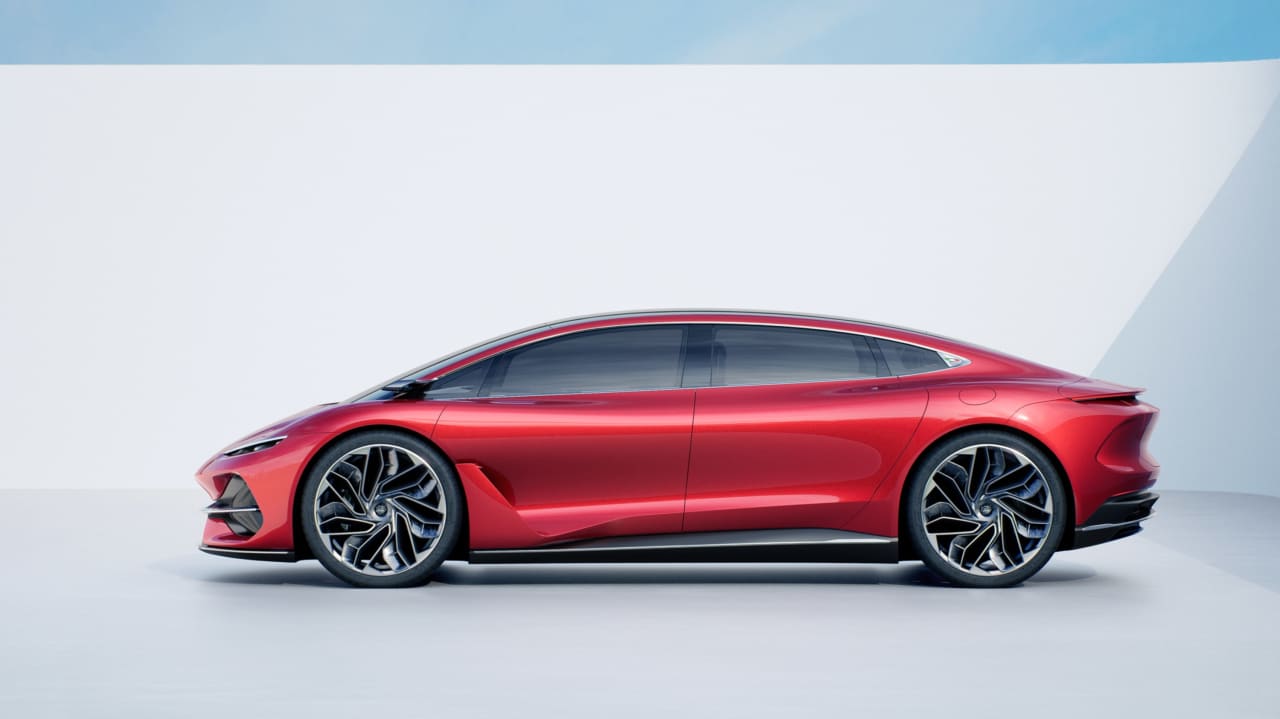How the Middle East Became the Latest ‘Gold Rush’ in Marketing
The Middle East is set to be the fastest-growing marketing region in the world, driven by momentum in countries such as Saudi Arabia
Saudi Arabia’s fledgling advertising industry and continued growth in the sector in the United Arab Emirates are helping to make the marketing business in the Middle East the fastest-growing in the world.
Ad spending in the Middle East is projected to increase 8.1% to $6.6 billion this year, up from 3.5% last year, according to advertising research firm WARC.
That expansion is building from a much smaller base than in many other ad markets. The Netherlands alone will generate $6 billion in ad spending in 2024, up about 2.3%, WARC said. But it is also enough to outpace every other region in 2024, the firm said.
“It reminds me almost of the gold rush,” said Reda Raad , chief executive of TBWA\Raad Group, an ad agency based in Dubai, in the United Arab Emirates, that is part of the U.S.-based ad holding company Omnicom Group . “I don’t think we’re going to see this type of growth again in our lifetime.” TBWA\Raad has won eight new clients over the past year, with an increase in head count of 17% to accommodate the new work, Raad said.
Some international brands have long maintained a presence in the region. PepsiCo has considered the area a strategic market for decades, said Karim Elfiqi , senior vice president and chief marketing officer at PepsiCo Africa, Middle East and South Asia. Sponsorship deals with local stars such as Mohamed Salah , a soccer player from Egypt, “are a testimony of how over time, we have been part of the cultural fabric of the region,” Elfiqi said.
Other major brands have formed a more recent focus on the Middle East. The Lego Group opened a Middle East and Africa headquarters in Dubai in 2019, citing the size of the region’s young population. That office has developed work such as a Ramadan-themed campaign that ran in the U.A.E. and Saudi Arabia, among other locations.
‘Massive growth’
The Middle East’s ad market has lagged behind regions such as North America and Europe partly because of stricter cultural norms and regulations that affected business, as did a more limited media landscape and economic instability, according to Raad.
But marketing growth in the region is now being driven in part by newfound marketing interest in Saudi Arabia, where ad spending this year is expected to reach $2.1 billion, nearly double its level in 2019, according to WARC. Growth is also coming from the U.A.E., whose ad market is expected to reach $1.7 billion in 2024. Smaller contributors include Qatar and Kuwait.
The landscape has changed now because of economic diversification, increased connectivity and a move into the digital world, leading international brands to enter and invest in campaigns tailored to the region, Raad said.
Four years ago, Saudi Arabia made up a small proportion of business at Lightblue, a creative experience and tech agency based in Dubai. These days, 40% of its business comes from the country, says co-founder David Balfour , who opened an office in Riyadh last month as a result.
“The conversation used to be, ‘We’re going to do this in Dubai.’ Now, it’s ‘We’re going to do this in Dubai—and in Saudi.’” Balfour said. “We’re seeing massive growth in that region.”
There have been speed bumps. As government spending reaches huge levels , Saudi Arabia experienced a rare economic contraction in 2023.
But the country’s efforts to expand its economic pursuits beyond oil have led to the creation of new brands, which are seeking the help of marketing agencies to get the word out.
Marketers in the region are seeking help to stay on-trend in areas such as generative artificial intelligence and social media, said Greg Paull , principal of R3, a consulting firm that helps match advertisers with agencies.
“U.A.E. has been a magnet for the region for 20 years as more investment has come in—but with the new leadership in Saudi since 2017 [when Mohammed bin Salman was named crown prince ], this market has gone through remarkable growth,” Paull said.
Saudi Arabia has faced criticism for its human-rights record under the crown prince, the day-to-day ruler of the kingdom, especially over the 2018 killing of dissident journalist Jamal Khashoggi and the more recent jailing of women’s rights activists.
Mohammed has outlasted the international isolation that followed Khashoggi’s killing, however, and continues to pursue an economic diversification plan dubbed Vision 2030. The country last year unveiled plans for a new international airline called Riyadh Air, is investing billions of dollars to build its tourism and videogame industries, and in March hosted a golf tournament in Jeddah under the auspices of LIV Golf, the Saudi-backed league that has both challenged the PGA Tour and struck a deal to unify with it.
Changing tides
Vision 2030 also calls women’s empowerment a top social priority and seeks to increase the country’s employment rate of women.
Nada Hakeem , CEO and co-founder of Saudi creative agency Wetheloft, said the perceptions of hardships for women in the marketing and advertising industry are outdated and inaccurate.
“As a Saudi woman who founded my company in 2012, I’ve always felt supported by the creative community and the industry as a whole,” Hakeem said. “While every society may have its challenges, I can confidently say that these challenges have not hindered our growth.”
A progression of new laws, policies and incentives are making the industry in Saudi Arabia more inclusive and supportive for women, she added.
In certain parts of the Middle East, “absolutely, it’s still challenging, but they are making the right strides, and they have the right quotas and ambitions in place,” said Rebecca Bezzina , CEO for the EMEA region at R/GA, an agency owned by Interpublic Group of Cos.
“They’ve got wealth, they’ve got world-class ambition, world-class budget. They’re not shy of doing things in the right way,” Bezzina added, speaking of the region overall. “But they still have a talent shortage, especially from a creative and design and product point of view. So often what we’ve found our success has been that they’ve come to us and said, ‘Oh, we want a world-class agency to help us launch this new venture or do this new brand.’”
R/GA said it sees 69% more requests for agency work from marketers in the region today than it did five years ago. It recently handled a brand redesign for Banque Saudi Fransi, which wanted to reaffirm its Saudi roots with a modern identity, and created Weyay, the brand for a new digital bank from the National Bank of Kuwait.
The agency hasn’t notably increased its regional workforce, but it has made changes to facilitate working across Europe and the Middle East.
Other Western players are making moves to capture a piece of the growth. Advertising giant WPP has long worked in Saudi Arabia through units such as Ogilvy and GroupM, but in 2021 established a joint venture with a local company to create ICG Saudi Arabia, a communications and media company based in Saudi Arabia. Ad holding company Stagwell opened new offices for its media agency Assembly in Riyadh in 2021 and in Cairo in 2022.
Regional hospitality
Some executives said certain facets of business dealings in the Middle East are different than in other parts of the world.
Bertrand Morin, a group account director for R/GA who is based in London and works often with Middle Eastern clients, said he spends much more time speaking about personal lives and families with those clients than those in the U.K. or U.S. He has been invited to Middle Eastern clients’ homes to join their families for dinner, something that has never happened with clients elsewhere.
But others say it can feel surprisingly familiar.
Balfour, the Lightblue co-founder, said he was struck by the number of ad-agency workers recently having dinner at the Riyadh location of steakhouse chain Beefbar, and the scene’s similarity to far-off locations.
“The staff are from everywhere in the world. The service and the food is unbelievable. There’s a DJ playing,” Balfour said. “Apart from not having alcohol, you could be anywhere in the world.”
 Copyright 2020, Dow Jones & Company, Inc. All Rights Reserved Worldwide. LEARN MORE
Copyright 2020, Dow Jones & Company, Inc. All Rights Reserved Worldwide. LEARN MORE
This stylish family home combines a classic palette and finishes with a flexible floorplan
Just 55 minutes from Sydney, make this your creative getaway located in the majestic Hawkesbury region.
Impact investing is becoming more mainstream as larger, institutional asset owners drive more money into the sector, according to the nonprofit Global Impact Investing Network in New York.
In the GIIN’s State of the Market 2024 report, published late last month, researchers found that assets allocated to impact-investing strategies by repeat survey responders grew by a compound annual growth rate (CAGR) of 14% over the last five years.
These 71 responders to both the 2019 and 2024 surveys saw their total impact assets under management grow to US$249 billion this year from US$129 billion five years ago.
Medium- and large-size investors were largely responsible for the strong impact returns: Medium-size investors posted a median CAGR of 11% a year over the five-year period, and large-size investors posted a median CAGR of 14% a year.
Interestingly, the CAGR of assets held by small investors dropped by a median of 14% a year.
“When we drill down behind the compound annual growth of the assets that are being allocated to impact investing, it’s largely those larger investors that are actually driving it,” says Dean Hand, the GIIN’s chief research officer.
Overall, the GIIN surveyed 305 investors with a combined US$490 billion under management from 39 countries. Nearly three-quarters of the responders were investment managers, while 10% were foundations, and 3% were family offices. Development finance institutions, institutional asset owners, and companies represented most of the rest.
The majority of impact strategies are executed through private-equity, but public debt and equity have been the fastest-growing asset classes over the past five years, the report said. Public debt is growing at a CAGR of 32%, and public equity is growing at a CAGR of 19%. That compares to a CAGR of 17% for private equity and 7% for private debt.
According to the GIIN, the rise in public impact assets is being driven by larger investors, likely institutions.
Private equity has traditionally served as an ideal way to execute impact strategies, as it allows investors to select vehicles specifically designed to create a positive social or environmental impact by, for example, providing loans to smallholder farmers in Africa or by supporting fledging renewable energy technologies.
Future Returns: Preqin expects managers to rely on family offices, private banks, and individual investors for growth in the next six years
But today, institutional investors are looking across their portfolios—encompassing both private and public assets—to achieve their impact goals.
“Institutional asset owners are saying, ‘In the interests of our ultimate beneficiaries, we probably need to start driving these strategies across our assets,’” Hand says. Instead of carving out a dedicated impact strategy, these investors are taking “a holistic portfolio approach.”
An institutional manager may want to address issues such as climate change, healthcare costs, and local economic growth so it can support a better quality of life for its beneficiaries.
To achieve these goals, the manager could invest across a range of private debt, private equity, and real estate.
But the public markets offer opportunities, too. Using public debt, a manager could, for example, invest in green bonds, regional bank bonds, or healthcare social bonds. In public equity, it could invest in green-power storage technologies, minority-focused real-estate trusts, and in pharmaceutical and medical-care company stocks with the aim of influencing them to lower the costs of care, according to an example the GIIN lays out in a separate report on institutional strategies.
Influencing companies to act in the best interests of society and the environment is increasingly being done through such shareholder advocacy, either directly through ownership in individual stocks or through fund vehicles.
“They’re trying to move their portfolio companies to actually solving some of the challenges that exist,” Hand says.
Although the rate of growth in public strategies for impact is brisk, among survey respondents investments in public debt totaled only 12% of assets and just 7% in public equity. Private equity, however, grabs 43% of these investors’ assets.
Within private equity, Hand also discerns more evidence of maturity in the impact sector. That’s because more impact-oriented asset owners invest in mature and growth-stage companies, which are favored by larger asset owners that have more substantial assets to put to work.
The GIIN State of the Market report also found that impact asset owners are largely happy with both the financial performance and impact results of their holdings.
About three-quarters of those surveyed were seeking risk-adjusted, market-rate returns, although foundations were an exception as 68% sought below-market returns, the report said. Overall, 86% reported their investments were performing in line or above their expectations—even when their targets were not met—and 90% said the same for their impact returns.
Private-equity posted the strongest results, returning 17% on average, although that was less than the 19% targeted return. By contrast, public equity returned 11%, above a 10% target.
The fact some asset classes over performed and others underperformed, shows that “normal economic forces are at play in the market,” Hand says.
Although investors are satisfied with their impact performance, they are still dealing with a fragmented approach for measuring it, the report said. “Despite this, over two-thirds of investors are incorporating impact criteria into their investment governance documents, signalling a significant shift toward formalising impact considerations in decision-making processes,” it said.
Also, more investors are getting third-party verification of their results, which strengthens their accountability in the market.
“The satisfaction with performance is nice to see,” Hand says. “But we do need to see more about what’s happening in terms of investors being able to actually track both the impact performance in real terms as well as the financial performance in real terms.”
This stylish family home combines a classic palette and finishes with a flexible floorplan
Just 55 minutes from Sydney, make this your creative getaway located in the majestic Hawkesbury region.






















